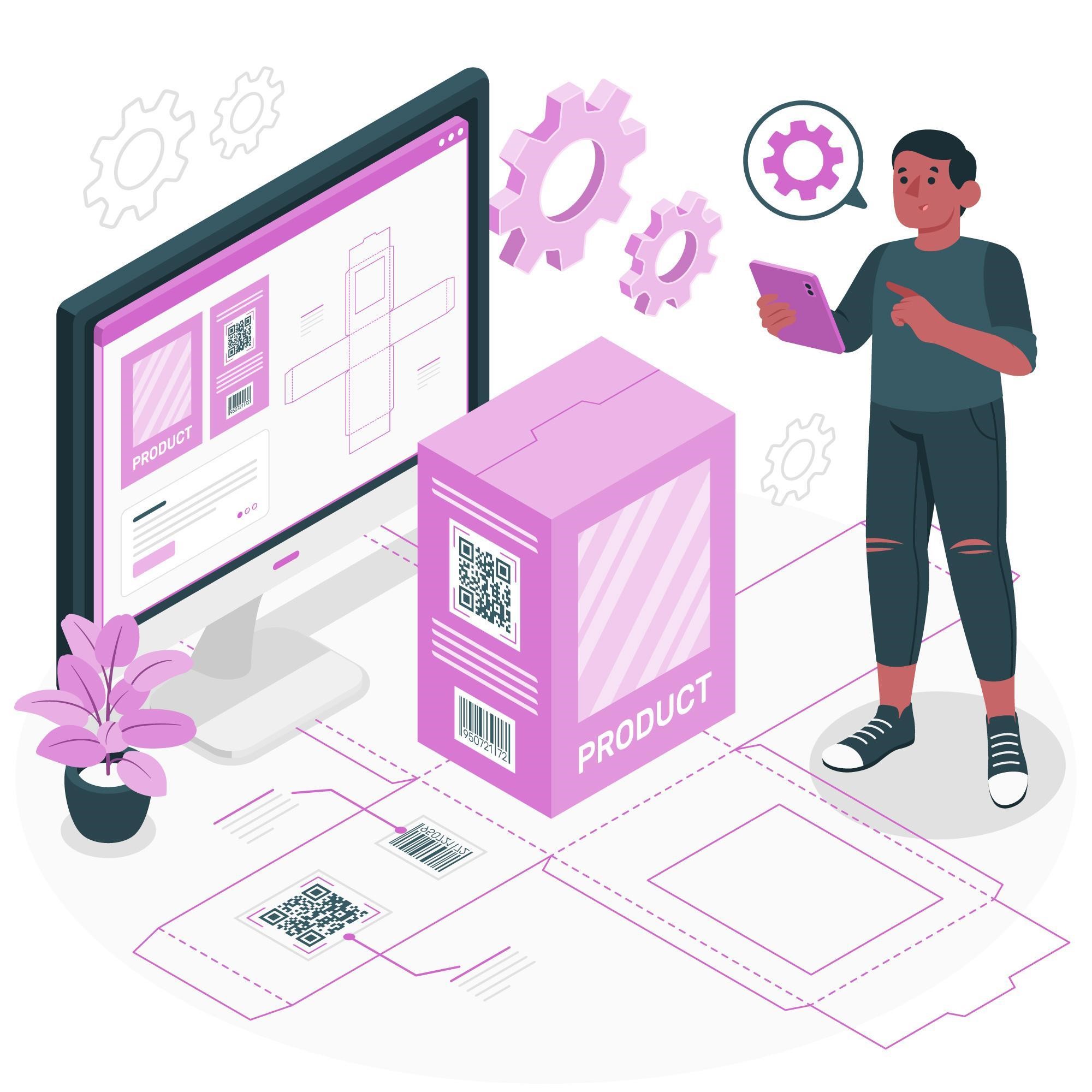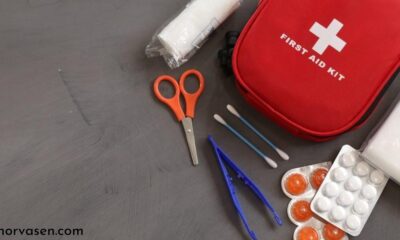Business
What should I pack for backpacking?

Embarking on a backpacking journey is an exhilarating experience that promises adventure, discovery, and self-reflection. Whether you’re planning to trek through lush forests, scale mountain peaks, or explore bustling cities, proper packing is crucial to ensure a comfortable and enjoyable trip.
The art of packing for backpacking lies in striking the perfect balance between being prepared for various situations and keeping your load manageable. In this comprehensive guide, we’ll delve into the essentials you should pack for your backpacking adventure, helping you make informed decisions and avoid common pitfalls.
The Foundation: Choosing the Right Backpack
Before we dive into the contents of your pack, it’s essential to start with the backpack itself. Your choice of backpack can make or break your backpacking experience. Look for a pack that fits your body comfortably and suits the length of your trip.
For most backpackers, a 40-60 liter pack is sufficient for trips lasting a few days to a couple of weeks. Ensure the backpack has proper padding on the shoulder straps and hip belt, as these features will distribute the weight evenly and reduce strain on your back.
When selecting a backpack, consider factors such as water resistance, durability, and organizational features like multiple compartments and external attachment points. A rain cover is also a wise addition to protect your gear from unexpected downpours. Check out resources like homifusion for more insights on choosing the right backpack for your needs.
Clothing: Versatility is Key
When it comes to clothing, the mantra “less is more” holds true for backpacking. Pack versatile pieces that can be layered and mixed-and-matched to suit various weather conditions and activities. Start with a base layer of moisture-wicking materials like merino wool or synthetic fabrics. These materials help regulate body temperature and dry quickly, making them ideal for active pursuits.
Include a warm mid-layer, such as a fleece jacket or a lightweight down vest, for cooler temperatures. An outer layer or shell jacket that’s both waterproof and breathable is essential for protection against rain and wind. Don’t forget to pack a pair of convertible hiking pants that can transform into shorts, saving space and offering versatility.
For a typical week-long trip, pack no more than three pairs of underwear and socks (preferably made of quick-drying materials), two t-shirts, one long-sleeve shirt, one pair of pants, and one pair of shorts. Remember to include a hat or cap for sun protection and a warm beanie for colder climates.
Footwear: Your Most Important Gear
Your choice of footwear can significantly impact your backpacking experience. Invest in a pair of well-fitting, comfortable hiking boots or trail shoes that provide adequate support and traction.
Break them in before your trip to avoid blisters and discomfort on the trail. Pack a pair of lightweight camp shoes or sandals to give your feet a break at the end of the day and for use in communal showers if you’re staying in hostels or campgrounds.
Sleep System: Rest and Recovery
A good night’s sleep is crucial for recharging after a long day of backpacking. Your sleep system typically consists of three main components: a sleeping bag, a sleeping pad, and potentially a tent or shelter.
Choose a sleeping bag appropriate for the lowest temperatures you expect to encounter. Down-filled bags are lightweight and compressible but lose insulating properties when wet, while synthetic bags perform better in damp conditions. A sleeping pad not only provides comfort but also insulates you from the cold ground.
If you’re planning to camp, a lightweight backpacking tent is essential. Look for a tent that balances weight, durability, and protection from the elements. For solo backpackers, a one-person tent or even a bivy sack might suffice, while couples or friends might opt for a two-person tent to save weight by sharing.
Cooking and Hydration: Fueling Your Adventure
Staying well-fed and hydrated is crucial for maintaining energy levels during your backpacking trip. Pack a lightweight, compact stove and fuel, along with a pot or pan for cooking. A spork (combination spoon and fork) and a small knife will cover most of your utensil needs.
For food, focus on lightweight, high-energy options that are easy to prepare. Dehydrated meals, energy bars, nuts, and dried fruits are popular choices among backpackers. Don’t forget to pack a way to purify water, such as water purification tablets or a portable water filter, to ensure safe drinking water from natural sources.
Carry at least one water bottle or a hydration bladder with a capacity of 1-2 liters. The amount of water you need to carry will depend on your route and the availability of water sources along the way.
Navigation and Communication: Stay on Track and Stay Safe
Even in the age of smartphones, it’s crucial to pack traditional navigation tools. Bring a detailed map of the area you’ll be exploring and a compass, and know how to use them. While many backpackers rely on GPS devices or smartphone apps for navigation, these should be considered supplements rather than replacements for physical maps.
Pack a fully charged portable battery pack to keep your electronic devices powered throughout your trip. A headlamp or flashlight with extra batteries is essential for navigating in low-light conditions and setting up camp after dark.
For safety, consider carrying a personal locator beacon (PLB) or satellite messenger device, especially if you’re venturing into remote areas. These devices can be lifesavers in emergency situations where cell phone coverage is unavailable.
First Aid and Emergency Preparedness
A well-stocked first aid kit is a non-negotiable item for any backpacking trip. Include essentials such as adhesive bandages, gauze, antiseptic wipes, pain relievers, and any personal medications you require. Familiarize yourself with basic first aid procedures before your trip.
Pack a multi-tool or Swiss Army knife, which can be invaluable for repairs and other unexpected needs. Include a small repair kit with items like duct tape, safety pins, and a needle and thread for quick fixes on the trail.
Hygiene and Personal Care
Maintaining personal hygiene while backpacking is important for both comfort and health. Pack a small towel, biodegradable soap, toothbrush and toothpaste, and hand sanitizer. For longer trips, consider bringing a small bottle of biodegradable laundry detergent to wash clothes.
If you’re backpacking in areas where insects are prevalent, don’t forget insect repellent. Sunscreen is also crucial, even in cooler climates or forested areas, to protect your skin from harmful UV rays.
Female backpackers should consider their menstrual needs and pack appropriate supplies, keeping in mind that disposal options may be limited in the backcountry.
Extras: Enhancing Your Experience
While not strictly necessary, some extra items can greatly enhance your backpacking experience. A lightweight, inflatable pillow can improve your sleep quality. Lesbify: Understanding Its Meaning and Cultural Impact A pair of trekking poles can reduce strain on your knees and improve balance, especially on challenging terrain or when carrying a heavy pack.
A small notebook and pen can be great for journaling your experiences or jotting down important information. If you enjoy photography, consider bringing a camera to capture memories of your journey. Just remember to balance these comfort items against the additional weight they add to your pack.
Packing Strategies: Maximizing Space and Accessibility
How you pack your backpack is almost as important as what you pack. Place heavier items close to your back and towards the middle of the pack to maintain balance. Use compression sacks or packing cubes to organize and compress clothing and sleeping gear, maximizing space in your pack.
Keep items you’ll need frequently during the day, such as snacks, water, map, and rain gear, easily accessible in exterior pockets or at the top of your pack. Use waterproof stuff sacks or plastic bags to protect sensitive items like electronics and spare clothing from moisture.
Conclusion: The Art of Mindful Packing
Packing for a backpacking trip is an art that combines practicality, minimalism, and preparedness. As you gain more experience, you’ll refine your packing list to suit your personal preferences and the specific demands of your trips. Remember that the goal is not to pack for every possible scenario, but to be adequately prepared while keeping your load manageable.
Before each trip, research the specific conditions and requirements of your destination. Consider factors such as climate, terrain, wildlife, and regulations that might affect what you need to bring. Don’t be afraid to adapt your packing list as you learn what works best for you.
Ultimately, the joy of backpacking comes from immersing yourself in nature, challenging yourself, and embracing new experiences. By packing thoughtfully and efficiently, you’ll be well-prepared to face the adventures that await you on the trail. So lace up your boots, shoulder your pack, and set out to explore the world one step at a time. Happy backpacking!
Business
The Spark Shop – Online Shopping Big Discount

In a world where online shopping has become the norm, finding a platform that not only offers a wide array of products but also big discounts can feel like hitting the jackpot. Enter The Spark Shop—your one-stop destination for everything from kids’ clothes to tech gadgets, all available at unbeatable prices. This blog post will explore how The Spark Shop is changing the game with its exclusive offers and top-notch selection, making it a treasure trove for tech enthusiasts, beauty lovers, and parents alike.
The Spark Shop A Haven for Tech Enthusiasts
Tech enthusiasts, rejoice! The Spark Shop offers an impressive collection of the latest gadgets and tech gear, ensuring you stay at the forefront of technology without breaking the bank. From the newest smartwatches to innovative home automation systems, this platform caters to all your tech cravings.
One standout product that has captivated tech lovers is the SmartHome Hub, an all-in-one device that seamlessly integrates with your existing smart devices. Available on The Spark Shop at a jaw-dropping discount, it’s a must-have for anyone looking to streamline their home automation experience.
Additionally, the website features cutting-edge drones and VR headsets, perfect for those who crave adventure and immersive experiences. With prices slashed by up to 40%, these hot-ticket items are flying off the virtual shelves.
For tech enthusiasts seeking top-tier gadgets at unbeatable prices, The Spark Shop is the ultimate destination. Never miss the chance to stay updated with the latest tech while enjoying substantial savings.
Beauty at Affordable Prices The Spark Shop’s Range
Beauty lovers, your search for affordable yet high-quality beauty products ends here. The Spark Shop boasts an extensive range of cosmetics and skincare essentials, each carefully curated to meet the diverse needs of beauty enthusiasts.
From luxurious serums to vibrant eyeshadow palettes, this online store has it all. Notably, the site’s premium skincare line has received rave reviews, with users praising its effectiveness and affordability. At The Spark Shop, beauty isn’t just skin deep—it’s financially accessible too.
What’s more, regular sales and promotions make it even easier to indulge in your favorite beauty products without feeling guilty. Tips on choosing beauty products online include reading customer reviews, checking ingredients, and considering your unique skin type to ensure the best fit.
The Spark Shop ensures that you don’t have to choose between beauty and your budget. Revel in the luxury of high-quality products at prices that won’t break the bank.
Dress Your Kids for Less with The Spark Shop
Parents, get ready to dress your little ones in style without overspending. The Spark Shop’s kids’ clothing section offers an array of trendy and comfortable outfits suitable for every occasion.
From cozy pajamas to stylish party dresses, the selections are as varied as they are affordable. Parents can breathe easy knowing they can find high-quality clothes that stand up to the rigors of childhood play.
When shopping for kids’ clothes online, it’s crucial to pick the right sizes and styles to ensure a perfect fit. The Spark Shop provides detailed size guides and fashion tips, making it easy for parents to select the ideal garments for their children.
Elevate your child’s wardrobe without emptying your wallet. Discover the joys of shopping at The Spark Shop, where quality meets affordability in kids’ fashion.
Wireless Earbuds and More The Audio Experience
Whether you’re a music lover or a podcast enthusiast, The Spark Shop offers a wide range of wireless earbuds that promise an unparalleled audio experience. With options catering to different preferences and budgets, there’s something for everyone.
The highlight of the audio collection is the Enchant Series wireless earbuds. Known for their exceptional sound quality and long-lasting battery life, these earbuds are available at a fraction of the cost compared to other retailers. The Spark Shop ensures you enjoy your favorite tunes without compromising on quality or price.
When comparing prices with other retailers, it’s evident that The Spark Shop stands out with its competitive pricing and exclusive deals. Enjoy crystal-clear audio and freedom from wires with a purchase you won’t regret.
Navigating The Spark Shop Tips for Effective Shopping
Shopping online can be overwhelming, but The Spark Shop makes it a breeze with its user-friendly interface and well-organized categories. To find the best deals, start by signing up for the newsletter to receive exclusive offers and updates.
When making purchases, always prioritize secure payment options and ensure your account details are protected. The Spark Shop provides a safe and seamless checkout process, so you can shop with confidence.
To maximize your savings, keep an eye on flash sales and discount codes, which are frequently available on the site. With these tips, you’ll become a savvy shopper, uncovering hidden gems and big discounts at The Spark Shop.
The Spark Shop Community Reviews and Feedback
Joining The Spark Shop community means becoming part of a vibrant group of shoppers who love sharing their experiences and feedback. Customer reviews and ratings are crucial in guiding potential buyers towards making informed decisions.
Many shoppers have praised The Spark Shop’s excellent customer service and the quality of its products, resulting in a loyal customer base. Engaging with the community offers insights into the best deals and must-have items.
By participating in discussions and leaving reviews, you contribute to a supportive community that values transparency and quality. Together, let’s enhance the shopping experience at The Spark Shop.
YOU MAY ALSO LIKE
Luxury Shopping Experience at Online Malls
Conclusion
In conclusion, The Spark Shop offers an unparalleled online shopping experience with big discounts across a wide range of products. Whether you’re a tech enthusiast, beauty lover, or parent, there’s something for everyone at prices that won’t break the bank.
Explore The Spark Shop today and discover the joy of finding high-quality products at unbeatable prices. Share your experiences and join a community of savvy shoppers who appreciate value and quality.
Remember, The Spark Shop is more than just a store—it’s a revolution in online shopping, where big discounts meet exceptional offerings. Don’t miss out on the chance to elevate your shopping experience. Visit The Spark Shop now!
FAQs
- How does The Spark Shop offer such big discounts?
The Spark Shop sources products directly from manufacturers, eliminating middlemen costs.
- Are the products on The Spark Shop authentic and reliable?
Yes, The Spark Shop ensures the authenticity and quality of its products.
- Can I return products if they don’t meet my expectations?
The Spark Shop offers a hassle-free return policy within a specified period.
- How quickly are orders processed and delivered?
Orders are typically processed within 24 hours, with delivery times varying by location.
- Does The Spark Shop have a loyalty program for returning customers?
Yes, The Spark Shop rewards returning customers with exclusive discounts and offers.
Business
Instant Loans vs. Traditional Loans: Which One Is Right for You?

When it comes to borrowing money, the variety of loan options available can be overwhelming. Two of the most common types are instant loans and traditional loans. Each has its own advantages and disadvantages, and the right one for you depends on your financial needs and circumstances. In this article, we’ll explore the key differences between these two types of loans to help you decide which one is the best fit for you.
What Are Instant Loans?
An instant loan UK, often referred to a payday loan or quick loan, is a short-term loan that provides fast access to cash, typically within a few hours or even minutes of approval. These loans are designed to cover urgent or unexpected expenses, such as medical bills, car repairs, or other emergencies. Instant loans are typically smaller in amount, ranging from £100 to £1,000, depending on the lender.
Advantages of Instant Loans:
- Speed: The biggest advantage of instant loans is the speed at which you can access the money. If you’re in a financial emergency and need cash quickly, an instant loan can be a lifesaver. Most lenders offer online applications, and approval can be almost immediate.
- No Collateral Required: Instant loans are usually unsecured, meaning you don’t need to provide collateral, like a car or home, to obtain the loan.
- Minimal Documentation: These loans often require minimal paperwork. Most lenders will only ask for basic information such as your income, employment status, and bank details.
- Flexible Eligibility: Even individuals with poor credit scores can often qualify for an instant loan. The lending criteria are generally more lenient compared to traditional loans.
What Are Traditional Loans?
Traditional loans, on the other hand, are longer-term loans offered by banks, credit unions, and other financial institutions. These loans are typically used for larger financial needs such as buying a car, financing a home, or funding a business. Traditional loans can range from a few thousand pounds to several hundred thousand, depending on the purpose of the loan and the borrower’s creditworthiness.
Advantages of Traditional Loans:
- Longer Repayment Terms: With repayment periods ranging from several months to decades, traditional loans provide more flexibility in managing your monthly payments.
- Larger Loan Amounts: If you need a significant amount of money, traditional loans are the better option. They allow you to borrow larger sums and use them for long-term investments like a home or a car.
- Credit Building: Traditional loans, when paid off on time, can help you build a solid credit history, which can make it easier to access credit in the future.
Which Loan Is Right for You?
Choosing between an instant loan and a traditional loan depends on your current financial situation and needs. If you need a small amount of money quickly and are confident you can repay it in a short period, an instant loan might be the right option. However, if you’re planning a larger financial investment and have the time to go through the approval process, a traditional loan is likely the better choice due to its lower interest rates and longer repayment terms.
Before making any decisions, it’s important to carefully assess your financial situation, compare different loan offers, and ensure you fully understand the terms and conditions of the loan you choose. Both instant and traditional loans have their place, but the key is to find the option that best aligns with your needs and financial goals.
Business
How an online product customizer can elevate your brand

In today’s market, where personalization is essential for attracting and retaining customers, an online product customizer is a key tool for businesses aiming to thrive in a competitive environment. One of the most comprehensive and effective options is the Shopify product customizer. In this article, we will provide you with the necessary information to understand everything you need for your brand to grow.
A strong, differentiated brand image can be the difference between success and failure. We will explore how an online product customizer can not only contribute to this differentiation but also elevate your brand to new heights.
The Importance of Personalization
Personalization is no longer just a luxury; it has become a fundamental expectation of consumers. According to various studies, a significant percentage of consumers state that they are willing to pay more for products they can customize to their liking. This trend stems from the fact that personalization allows customers to feel more connected to the products they purchase, turning a simple transaction into a meaningful experience.
What is an Online Product Customizer?
An online product customizer is a tool that enables users to create products tailored to their preferences and need. Through digital platforms, customers can choose colors, designs, texts, and other elements that reflect their personal style. Some examples of products that can often be customized include clothing, accessories, decorative items, and tech products, among others.

Benefits for Your Brand
1. Differentiation
In a saturated market, offering customizable products helps your brand stand out. Customers tend to choose brands that provide something unique. Offering personalized options not only captures consumer attention but also builds a strong value proposition. Your competitor may offer the same type of product, but by offering customization, you automatically differentiate yourself.
2. Enhanced Customer Experience
The customer experience is crucial in the purchasing decision. An online product customizer improves this experience by allowing customers to engage in the process of creating their products. This type of interaction generates a sense of belonging and satisfaction that can lead to customer loyalty. Customers will enjoy sharing their creations on social media, which increases your brand’s visibility.
3. Increase in Sales
Personalization often leads to increased sales. Customers who feel they have created something unique for themselves are more likely to complete their purchase. Furthermore, personalization can justify higher prices as customers perceive more value in a unique product. Thus, implementing a customizer can directly contribute to improving your revenue.
4. Direct Feedback
An online product customizer is not only designed for customers to place orders, but it also provides the opportunity to receive valuable feedback. By analyzing which features are most popular and what customizations your customers choose, you can obtain vital information to adjust your offering or introduce new products that resonate even more with your consumers.
5. Fostering Brand Loyalty
Personalization not only attracts new customers but also fosters loyalty among existing ones. When consumers feel that the brand listens to their desires and offers personalized options, they are more likely to return for future purchases. A good customizable experience generates satisfied customers who are willing to recommend your brand to others.
Success Examples
Companies like Nike, Coca-Cola, and Starbucks have leveraged personalization to engage their customers in innovative ways. Nike, for example, allows consumers to customize their shoes by adding colors and features, while Coca-Cola launched a campaign where customers could find bottles with their names or friends’ names. These strategies not only generated sales but also fostered a strong emotional bond between consumers and the brand.
Implementing a Product Customizer
If you wish to implement a customizer in your online store, there are several steps you can follow:
- Market Research: Before implementing, research which customization options are most attractive to your target audience.
- Choose the Right Platform: There are various tools available that can integrate into your website; choose the one that best fits your needs.
- Facilitate Usability: Ensure that the customization process is intuitive and easy to use. A user-friendly design will enhance the customer experience.
- Promote the Customization Option: Promote your new customizer across all marketing channels. Social media, email campaigns, and your website are excellent starting points.
- Measure Results: Once implemented, monitor the metrics to see how it’s performing. Look for increases in sales, conversion rates, and customer satisfaction.
Now that you understand how an online product customizer can elevate your brand, it’s time to take the next step. If you want to stand out in the market and provide your customers with a unique experience, consider implementing a customizer in your online store. Stay ahead by adapting your business model to meet evolving consumer expectations.
-

 Business5 months ago
Business5 months agoExploring the Rental Market: Properties for Rent in Malta
-

 How-To Guides5 months ago
How-To Guides5 months agoComprehensive Guide to Cockwarming: Enhancing Intimacy and Connection
-

 Home Improvement6 months ago
Home Improvement6 months agoEco-Friendly Round Rug Options for Sustainable Living in NZ
-

 Apps and Games6 months ago
Apps and Games6 months agoDiscover Tickzoo: The Ultimate Platform for Video Content Lovers and Creators
-

 Fashion6 months ago
Fashion6 months agoBlack Magic: The Elegance and Sophistication of Ultimate Homecoming Dresses in Black
-

 Tech7 months ago
Tech7 months agoExploring the Features of Innocams: The Future of Security
-

 Business7 months ago
Business7 months agoUnlock Potential: Explore Pikruos Services
-

 Health6 months ago
Health6 months agoSports First Aid Kits: Must-Have Items for Athletes and Their Coaches
